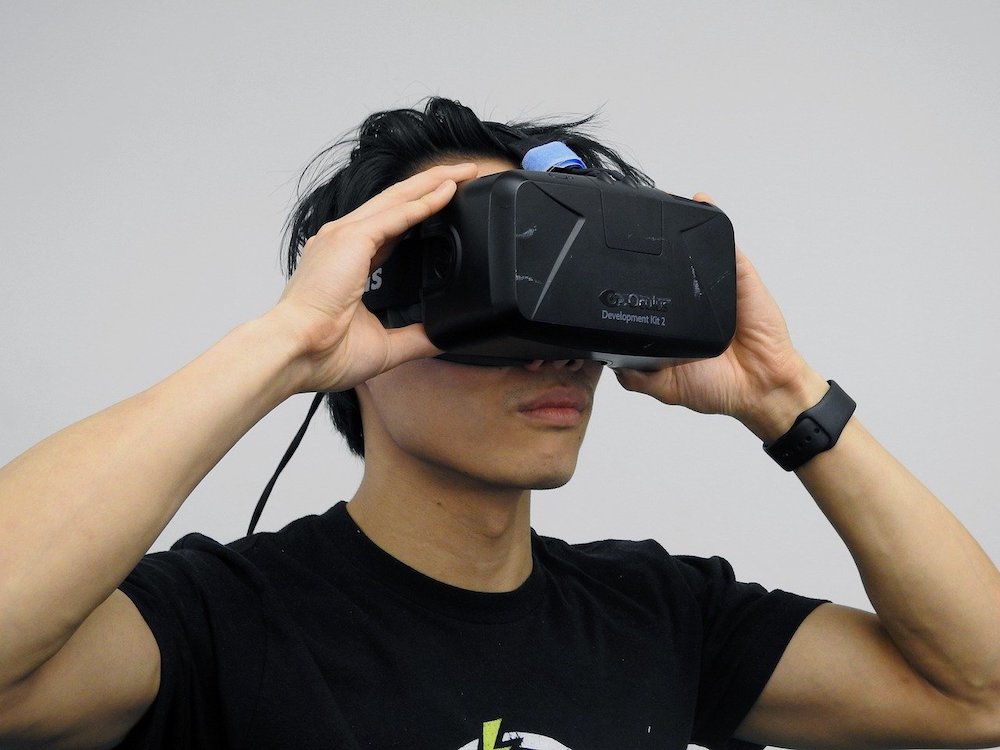Can Medical VR Applications Replace Clinical Training?
Advancements in technology have made virtual reality (VR) more realistic and immersive for the user. VR apps are increasingly becoming a part of undergraduate and graduate medical education, as well as continuing medical education around the world. To allow for continuing medical education since the start of the COVID-19 pandemic, medical VR applications are now an invaluable tool for numerous educational facilities. Following the success of using medical VR applications to enhance the clinical skills of medical students, the question now being asked is, can medical VR applications replace clinical training?
To answer the question and understand how training with VR is being used with medical students studying to become nurses and doctors, it is important to understand the different classifications of medical simulators and what they provide. Simulators are classified as:
- Low fidelity — lack realism or situational context and tend to be used to teach basic clinical skills, such as insertion of an intravenous drip.
- Moderate fidelity — provide a more realistic simulation, which will include physical features such as a pulse and develop specific, increasingly complex clinical skills.
- High fidelity — normally providing the highest level of realism and interaction, part and complete body manikins have been equipped with computer programs that enable the manikins to “respond” via physiological indicators that are fed to monitors.
The use of simulators for medical training is not new. In the 1960s, the first mannequin-based simulator (SimOne) was developed at the University of Southern California. Adult human patient simulators became commercially available in the early 1990s. Currently, the CAE Healthcare Human Patient Simulator is one of the most realistic simulators which provides responsive feedback to haptic (touch) feedback, used by medical students.
Sponsored Content:
In 2016 the first fully interactive virtual reality training simulator was developed by the Royal College of Surgeons, in Ireland. Called the RCSI VR Medical Training Sim, the purpose is to provide a simulation of a patient in an emergency room. The immersive VR sim enables undergraduate medical students and postgraduate medical and surgical trainees to learn essential clinical skills.
“This is the first fully interactive medical training simulator in the world which has been made publicly available and we are very excited about the potential it holds for future surgeons,” said Professor Oscar Traynor, Director of the National Surgical Training Centre at the Royal College of Surgeons in Ireland.
The aim of training with the VR medical training sim is to allow students to ‘experience’ what it would be like to treat a patient in a real emergency room. The theory is that practicing with the VR sim will help students to cope with the stress of an emergency situation and enhance their decision-making, management and clinical skills.
“The students are given the opportunity to experience highly realistic clinical scenarios, make critical decisions and act on those decisions,” added Traynor.
Sponsored Content:
The VR medical training sim is available on the Oculus VR platform. Since the release of the VR sim, further development has meant various VR simulators are now used to train skills in numerous disciplines, including neurosurgery, interventional cardiology, cardiothoracic surgery, intubation and bronchoscopy.
What are VR Immersive Systems?
VR immersive simulations can incorporate haptic technology which creates a tactile response. Simulators using haptic technology enables students to enhance both their clinical and motor skills, alongside their theoretical knowledge. Also referred to as box simulators and bench-top simulators, the haptic interfaces can accurately simulate a patient’s response to treatment and surgical procedures.
The development of VR medical simulation training has not only focused on realism. Another aspect is to ensure the cost is not going to prevent educational facilities from being able to purchase the applications.
To reduce the cost of VR medical simulation training, the Oculus Rift and HTC Vive are two systems that provide a cost-effective solution. Both allow for an immersive experience by simulating a virtual environment. The user can make decisions in real time with a 360-degree panoramic view. VR immersive systems are different from interactive systems which do not provide the same level of realism.
The advantage of interactive systems is that they can also be used on a laptop or computer, without a headset. However, interactive systems are only suitable for enhancing theoretical medical education, due to the absence of haptic simulation.
Effectiveness of VR Medical Simulation Training
A major challenge for medical undergraduates is the application of theoretical knowledge to the management of patients. As evidenced by international bodies and medical schools, learning and enhancing clinical skills is a key part of medical training. At both undergraduate and postgraduate levels, medical students previously completed their educational programs armed with theoretical knowledge. Due to the reliance on learning clinical skills during placements, many nurses and doctors lacked skills vital for patient safety.
One medical simulator that provides both responsive feedback to decisions made during treatment and haptic (touch) feedback, is the CAE Healthcare Human Patient Simulator (HPS). This simulator is one of the most realistic high-fidelity simulators used by medical students. Check out the video below of the CAE Healthcare Human Patient Simulator in use during a training session at the Icahn School of Medicine at Mount Sinai, New York, USA.
Numerous published studies have been conducted to examine the effectiveness of VR medical simulation. The majority of these studies suggest training with medical simulators is beneficial and helps enhance clinical competence. The main drawback with medical simulators such as the CAE HPS, is the high cost.
Development of VR Medical Simulation Training
Changes in the curricula for medical students have consequently resulted in more emphasis on the assessment of clinical skills. To effectively assess key clinical skills without real patients, mannequins were traditionally used. Although mannequins are useful, the lack of realism made it difficult to assess the clinical skills of medical students.
This has meant that many medical students completed their studies with excellent theoretical knowledge but very limited clinical skills. VR medical simulation applications are closing the gap. VR interactive medical training simulators aim to rectify the issue of realism, by providing a truly immersive experience that reflects how a real patient responds to treatment.
Used for years by numerous industries including aviation, engineering and the military, simulation training is now recognized as a valuable tool for medical students. It seems clear that medical errors are more likely to be prevented when medical students train with VR medical simulators. This is in part attributed to students developing and enhancing their clinical skills, prior to professional placements.
A recent report by the Institute of Medicine (IOM) recorded high rates of preventable medical errors. The report included 13 recommendations for changes required to improve safety and standards for patient care. Medical education and changes in how medical education is delivered were one of the recommendations.
The rise of using VR in medical education, to help students avoid making medical errors that could cause patient harm is a reflection of this recommendation. The current research certainly seems to support the use of VR medical simulators and the potential for further development is huge.
At this current time, the likelihood of medical simulation training replacing all clinical training is still not in sight. However, the advantages of using medical simulators and virtual reality during medical training and education are unmistakable. Consequently, it is inevitable there will be further improvements in usability, graphics and haptic (tactile) feedback. Without a doubt, keeping a keen eye on future developments is worthwhile!
Learn More About VR in Medicine
References:
- Panteleimon Pantelidis, Angeliki Chorti, Ioanna Papagiouvanni, Georgios Paparoidamis, Christos Drosos, Thrasyvoulos Panagiotakopoulos, Georgios Lales and Michail Sideris (December 20th 2017). Virtual and Augmented Reality in Medical Education, Medical and Surgical Education – Past, Present and Future
Sponsored Content:





















